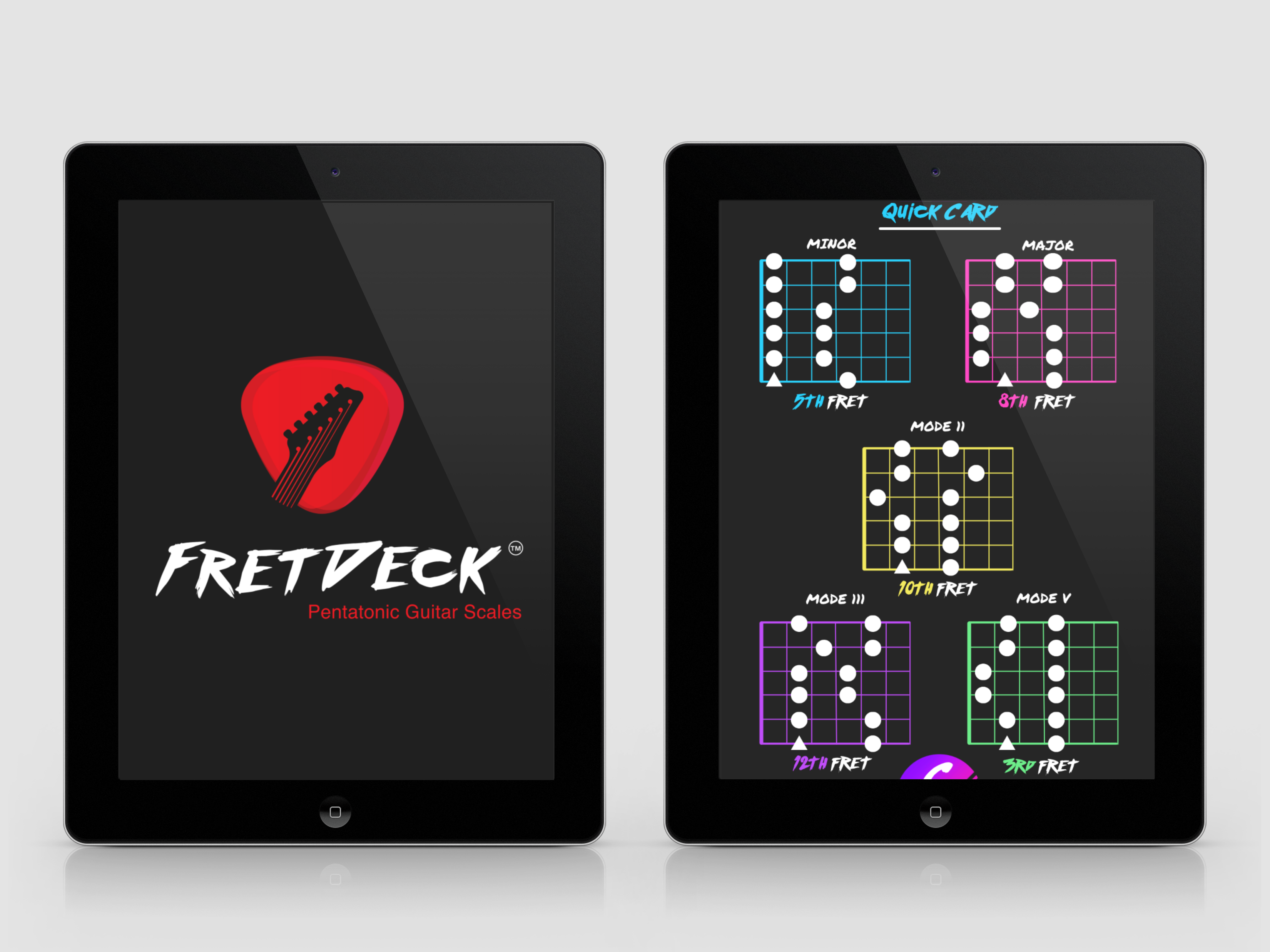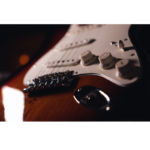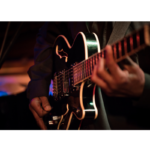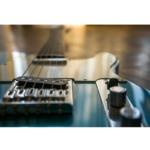Hey there, guitarists! If you’re looking to add depth and versatility to your playing, then guitar triads shapes are the way to go. Triads are three-note chords that capture the essence of a chord in a compact, easy-to-use shape. They’re incredibly versatile, and they allow you to move fluidly across the fretboard without muddying up the sound.
In this post, we’ll go over the basics of guitar triad shapes, show you how to practice them, and explain why they’re such powerful tools for both rhythm and lead guitarists. Ready to dive in? Let’s get started!
What Are Guitar Triads?
A triad is a chord with three notes, each with its own unique role:
- Root – The foundational note of the chord.
- Third – Defines whether the chord is major or minor.
- Fifth – Adds harmony and completes the triad.
Triads are built from the intervals between these notes, allowing you to play the essence of a full chord using only three notes. For example, an A major triad consists of A (root), C# (major third), and E (perfect fifth). These triads can be played in various shapes and across different string groups, making them flexible for any genre or playing style.

Download The FretDeck & Pentatonic Secrets Course!
Download Our Course
Essential Guitar Triad Shapes
Here are the basic triad shapes for major, minor, and diminished chords across three string groups: the D-G-B strings, A-D-G strings, and E-A-D strings.
1. Major Triads
- Root Position: Root on the lowest string
- First Inversion: Third as the lowest note
- Second Inversion: Fifth as the lowest note
2. Minor Triads
- Use the same pattern as major triads, but with the third lowered by a half step to create a minor sound.
3. Diminished Triads
- Lower both the third and the fifth by a half step to create tension for passing chords.
Each triad can be played in different positions and inversions, so once you’ve mastered the basic shapes, you can easily move these up and down the neck.
Why Guitar Triad Shapes Are Useful
Here’s why every guitarist should know their triads:
- Improves Fretboard Knowledge: Triads give you a better understanding of chord structure and how chords are built across the neck.
- Great for Rhythm Playing: Guitar Triads shapes let you add depth and color to rhythm parts without overcrowding the song.
- Adds Movement and Voice Leading: Moving through triads lets you create smooth, melodic progressions with minimal movement.
- Perfect for Lead Lines: Triads are ideal for outlining chords in solos, helping you create melodic lines that follow the underlying harmony.
How to Practice Guitar Triad Shapes
Now that you know the basics, let’s dive into some ways to practice these triads and make them second nature.
1. Learn the Basic Guitar Triads Shapes in All Positions
Start by learning each triad shape across the fretboard in multiple positions. Focus on major and minor triads first, as these are the most commonly used.
- Exercise: Pick a key, like C major, and play the I-IV-V progression (C, F, G) using only triads on the D-G-B strings. Move to different positions on the fretboard, using root, first, and second inversions for each triad.
- Tip: Use a metronome to keep your timing steady as you switch between triad shapes.
2. Practice Inversions of Each Triad
Triad inversions are great for creating movement in your playing. Inversions let you play the same chord but with a different note on the bottom, helping you stay within a specific range on the fretboard.
- Exercise: Take a C major triad and play each inversion in sequence up the neck. Start with root position, then move to first inversion, and then to second inversion.
- Tip: Practice these inversions on different string sets to improve your flexibility and fretboard knowledge.
3. Use Guitar Triads Shapes to Outline Chord Progressions
Using triads to outline progressions is a fantastic way to add variety to your rhythm playing and create a fuller sound without overwhelming the arrangement.
- Exercise: Play a common chord progression, like I-IV-V (e.g., C – F – G), using only triads. Experiment with using different triad inversions and moving smoothly between shapes on the neck.
- Tip: As you switch between chords, try to keep each chord change close to the previous one by using the nearest inversion. This makes your playing sound more connected and creates a smoother progression.
4. Apply Triads to Arpeggios and Lead Lines
Triads aren’t just for rhythm—they’re great for lead playing too. Practice using triads to outline chords as you play solos and melodies. This technique can give your lead lines a more structured, melodic feel that complements the harmony.
- Exercise: Choose a progression, like G-C-D, and practice soloing using only the notes in each triad (G major, C major, D major). Try using each triad’s notes as an arpeggio, and experiment with different inversions.
- Tip: Add slides, hammer-ons, and pull-offs to make the arpeggiated notes more expressive and fluid.
5. Play Along with a Backing Track
Using a backing track is one of the best ways to practice triads in a real musical context. It helps you hear how the triads fit within a song’s harmony and allows you to experiment with timing and rhythm.
- Exercise: Find a backing track in a simple key, like G major. Use triads to play along, focusing on I-IV-V or other simple progressions. Try different triad shapes and inversions to hear how they interact with the backing chords.
- Tip: Practice switching triad positions while staying in time with the track. This will give you better control over your rhythm and timing.
6. Use Guitar Triads Shapes to Create Harmonized Melodies
Guitar Triads Shapes are also great for harmonizing single-note melodies, adding fullness and character. This is especially useful if you’re playing guitar in a duo or solo setting and want to make your parts sound more complete.
- Exercise: Take a simple melody and harmonize it with triads by adding the third and fifth of each note. Practice playing the melody and harmony together, using triad shapes to build the harmony.
- Tip: Start with a slow melody, so you can clearly hear the harmony you’re creating. This approach will make your playing sound fuller and more melodic.
Wrapping It Up: Guitar Triad Shapes for Every Player
Guitar Freaks Hangout on Discord
Understanding and practicing guitar triad shapes opens up new possibilities on the fretboard. Triads add depth to your rhythm playing, make your solos more melodic, and give you a greater command of chordal structure across the neck. Whether you’re playing blues, rock, jazz, or pop, knowing your triads will make you a more versatile and expressive guitarist.
Ready to incorporate triads into your practice routine? Start slow, practice each triad shape and inversion, and experiment with different progressions. Over time, you’ll find that these small, three-note shapes have a big impact on your playing.
And don’t forget—if you want to chat with other guitarists, share your progress, or get more tips on practicing, join us in the Guitar Freaks Hangout on Discord! It’s a great community to help you keep learning and get inspired. 🎸

Download The FretDeck & Pentatonic Secrets Course!
Download Our Course










